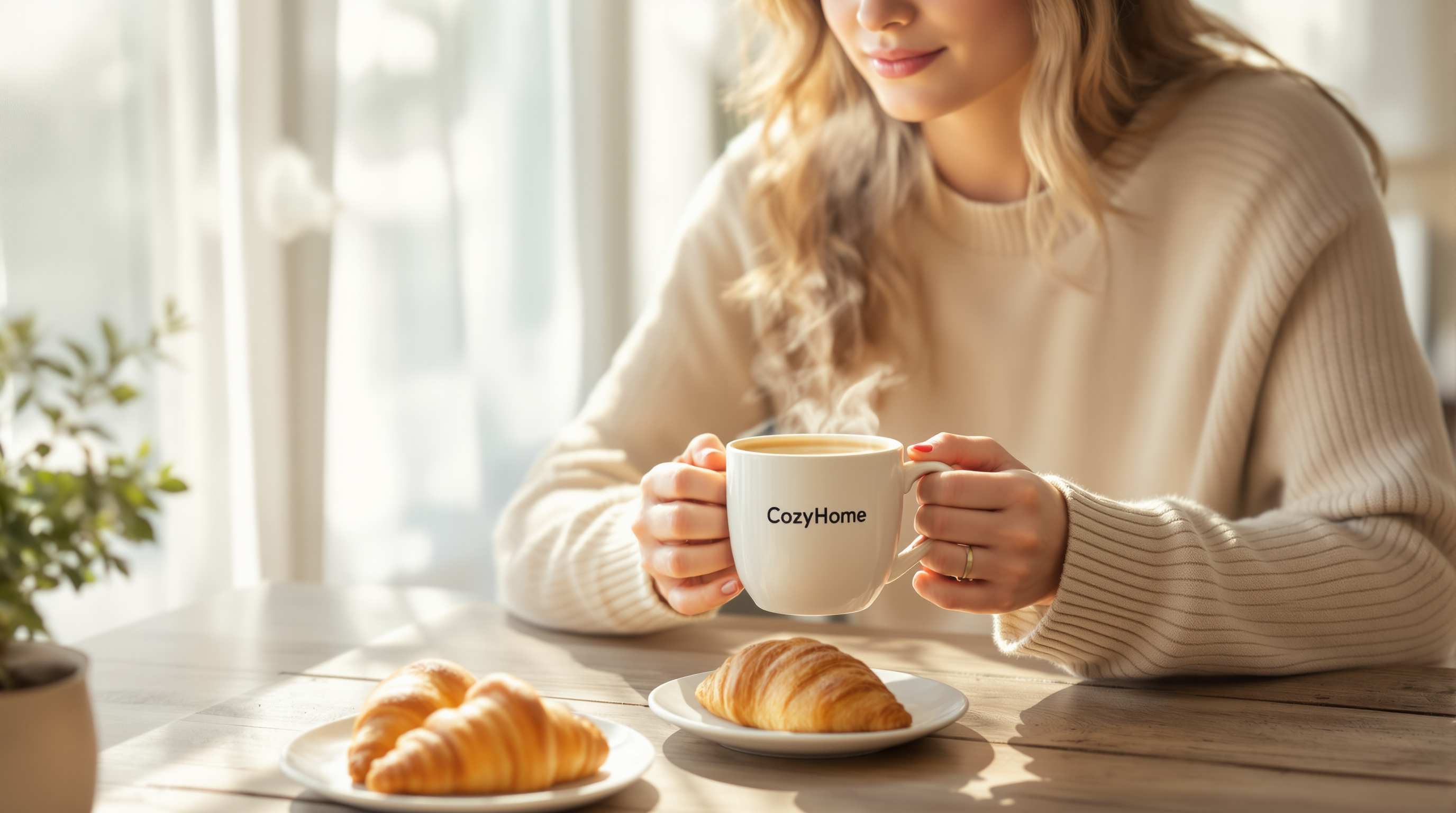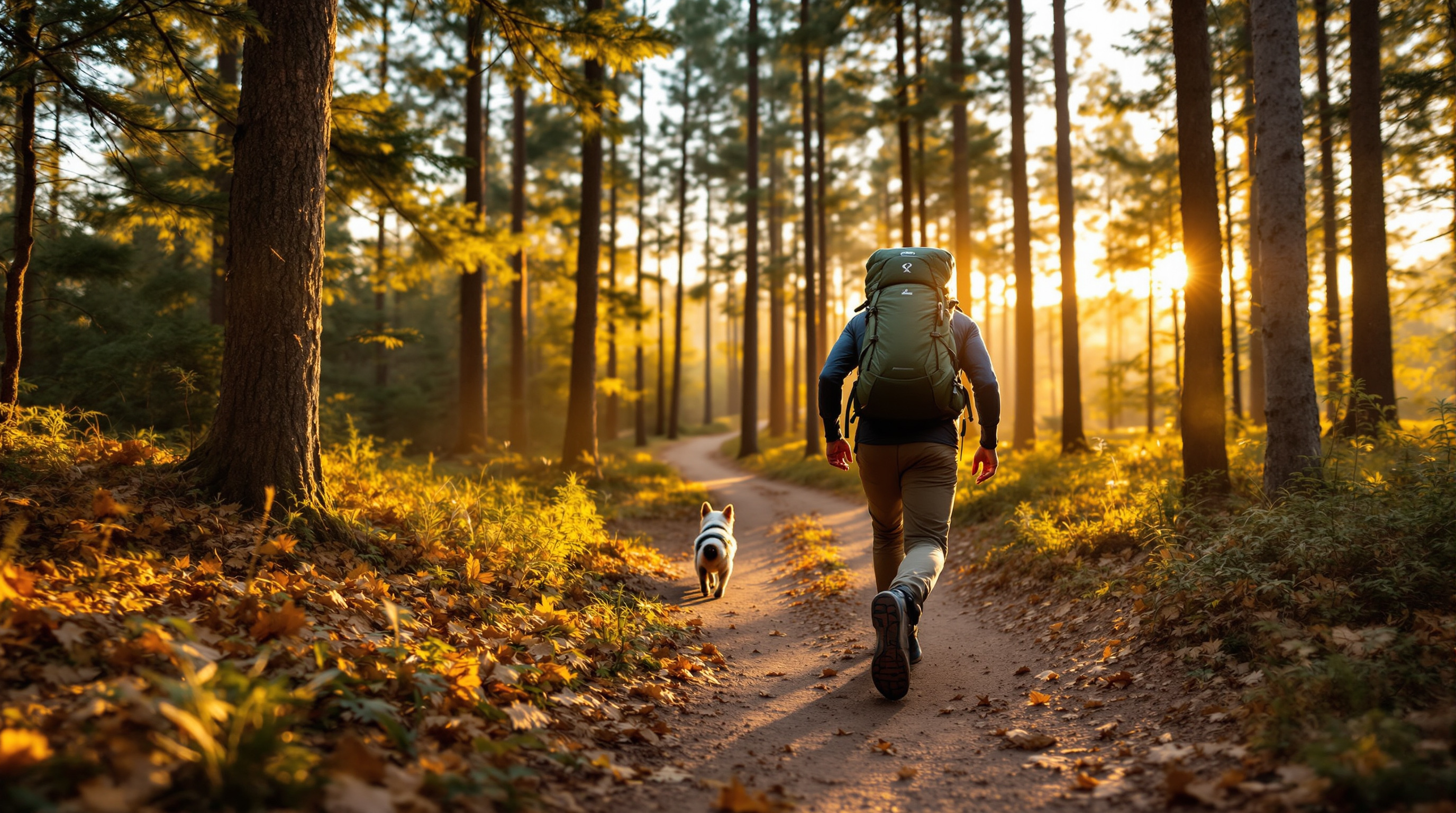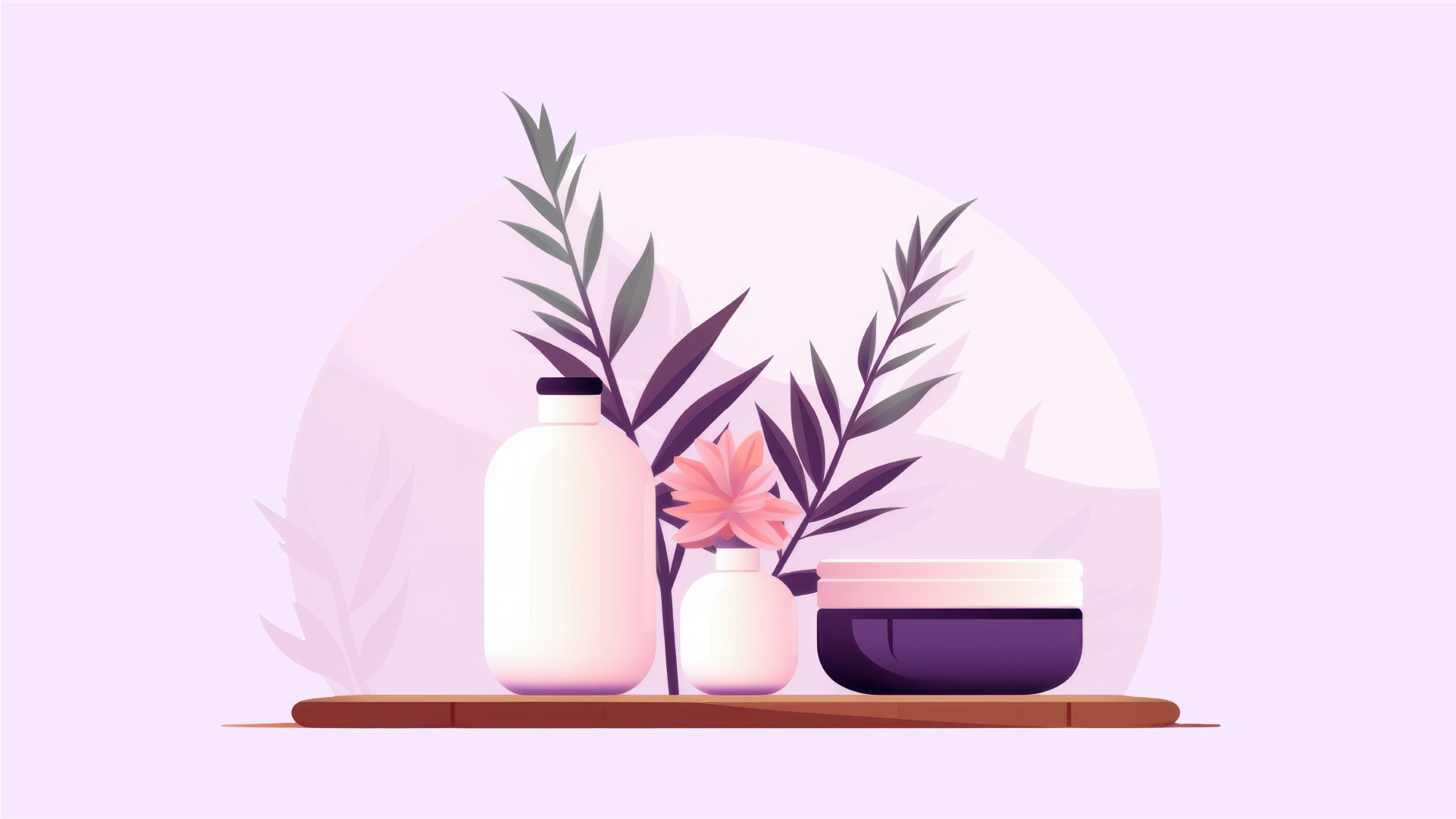Brands everywhere are focusing on better product visuals for a simple reason—they work. When someone scrolls through endless product pages, it's the photos that feel real and lived-in that make them pause. The right image doesn't just grab attention; it builds trust and helps shoppers picture themselves using your product in their daily life.
.png)
The numbers back this up. According to recent data, 85% of shoppers say product information and pictures are crucial to their brand choice. That stat tells the full story—visuals aren't just a nice extra; they're a deciding factor.
Think about how Alexa is marketed. You don't see endless white backgrounds. Instead, they show someone arriving home after a long day, saying, "Alexa, turn on the lights." The product fits naturally into the scene, making it easy to imagine having the same experience yourself. These lifestyle product images are powerful. They allow potential customers to step into real moments, taking the guesswork out and closing the gap between interest and purchase.
But there's a problem. Traditionally, building such compelling images meant expensive shoots, endless logistics, and intense editing cycles—not something every brand can scale. With the arrival of the AI product image generator, things have changed. Brands—large or small—can now create highly realistic, on-brand lifestyle images quickly and affordably.
So, let's explore how you can generate lifestyle images with AI and transform your product pages into story-driven, high-converting experiences:
What is an AI Product Image Generator and How Does it Work?
An AI product image generator is a cutting-edge tool that can automatically turn your basic product photos into striking visuals. Unlike old-school editing, these generators draw on artificial intelligence, using vast datasets and neural networks to understand what makes an image look natural and enticing.
Here’s how it works, simply:
- Feed in a product shot or describe a desired scene.
- The AI interprets both the product and your instructions, building an image that places the item into a new, real-world context.
- Advanced deep learning means the system recognizes objects, lighting, shadow, textures, and layers the product naturally into the lifestyle visual you asked for.
Modern platforms do more than just change backgrounds. They can:
- Generate authentic lifestyles, from city apartments to vacation getaways.
- Use different model representations (diverse ages, appearances, even gestures).
- Produce multiple variants—think product color, time of day, or mood—within minutes.
- Uphold brand consistency, so everything matches your guidelines.
- Adjust for cultural cues or holidays in seconds.
These advances are fueling a creative revolution, especially for eCommerce. A 2025 report highlights it: 76% of small businesses that switched to AI photography reported saving more than 80% on their content creation costs—with quality going up, not down.
How to Create Lifestyle Images Using an AI Product Image Generator
Creating stunning product images with AI doesn’t require technical expertise, but knowing the right approach can make all the difference. Here is a structured process to help you use an AI product image generator effectively and consistently produce professional, engaging product images.
Start with High-Quality Source Images
Good AI-generated photos begin with excellent source material. Use sharp, well-lit images that clearly show your product. Opt for plain, uncluttered backgrounds (white or transparent preferred). Utilize natural daylight or soft studio lighting to capture texture and details. Quality source photos create a solid foundation for AI to enhance and contextualize your product.
Pro Tip: Use images of at least 1500px width and avoid harsh reflections or cropped edges. Consistent lighting and clean outlines help the AI integrate your product naturally into new contexts.
Define Your Visual Story and Scene for AI Product Images
The next critical step is to define the context where your product will “live” in the images. Lifestyle product images succeed because they tell stories that help customers imagine the product in their daily lives.
Ask yourself:
- Where and how will customers use your product?
- What mood or emotion do you want to evoke—cozy, luxurious, energizing, or adventurous?
- What’s the lifestyle you want your product associated with?
Visualize the scene—kitchen counters, beach days, minimalist offices, or festive décor. Choose environments that reflect your customer’s real world, not just a staged setup. This sets the stage for your prompts and ensures every visual aligns with your brand story.
Master Writing Effective Prompts for AI Product Image Generator
The prompt you write is the AI’s blueprint. Detailed prompts deliver precise, high-quality AI-generated photos. Follow this formula to compose your prompts:
[Product] + [Environment/Scene] + [Lighting/Time of Day] + [Mood/Emotion] + [Photography Style/Camera Angle/Lens] + [Quality Attributes]
- Specify the product and its key features clearly.
- Describe setting and lighting conditions.
- Add mood descriptors like warm, cozy, futuristic.
- Include photographic details such as lens type, angle.
- Add imaging quality cues like commercial style, high resolution.
Below are a few consistent, detailed examples crafted to fit various eCommerce themes — you can adapt them easily using your own product details and branding tone.
1. Morning Coffee Ritual – White Ceramic Mug
Prompt:
“A young woman in a soft beige sweater holding a white ceramic coffee mug from ‘CozyHome’ while sitting at a sunlit wooden kitchen table, morning sunlight streaming through sheer curtains, steam rising from the coffee, a small plate of croissants nearby, soft shadows and warm ambient light, candid mid-sip pose, DSLR-style clarity, 50mm lens, shallow depth of field, ultra-realistic textures, cozy and inviting atmosphere, emphasizing the comfort and warmth of a morning ritual.”

What it does:
Shows the mug in a warm, relatable morning routine, emphasizing comfort and lifestyle appeal.
2. Outdoor Adventure – Osprey Talon 22 Hiking Backpack
Prompt:
“A man wearing an Osprey Talon 22 hiking backpack standing mid-step on a forest trail, golden hour sunlight filtering through tall pine trees, fallen leaves scattered on the path, a small dog walking alongside, natural shadows on the backpack, motion blur capturing mid-step movement, wide-angle cinematic composition, vibrant greens and warm earthy tones, DSLR-style sharpness, shallow depth of field, adventurous and energizing mood, emphasizing practical outdoor lifestyle and exploration.”

What it does:
Highlights the backpack in an active, real-world adventure, showing both functionality and aspirational lifestyle.
3. Work-from-Home Productivity – Logitech MX Keys Wireless Keyboard
Prompt:
“A professional woman using a Logitech MX Keys wireless keyboard on a minimalist home office desk, natural daylight from a large window illuminating the workspace, a laptop open with spreadsheet on screen, potted plant and notebook nearby, focused expression, mid-typing action, eye-level shot with shallow depth of field, realistic reflections on keyboard keys, soft shadows on desk surface, crisp high-resolution DSLR-style clarity, calm and productive atmosphere, modern and clean aesthetic emphasizing efficiency and professional lifestyle.”
.jpg)
What it does:
Shows the keyboard in a realistic workspace, highlighting usability and modern productivity.
Pro Tip: Use tone words that reflect your brand’s visual style in every prompt. For warm, cozy brands, include phrases like “soft morning light” or “inviting atmosphere” (as in the coffee mug example). For minimalist or modern brands, use “clean workspace,” “natural daylight,” or “balanced composition” (like the office setup example). Building a prompt library with consistent tone words ensures every image feels cohesive, realistic, and unmistakably you.
Negative Prompting for Cleaner Results
Add exclusions to avoid unwanted features:
“No reflections, avoid additional hands, exclude text overlays, prevent distorted shapes.”
Experiment with Multiple Variations
Don't settle for the first image generated. Create 3-5 variations with slight prompt modifications to see which resonates best with your brand aesthetic. Maybe try different backgrounds, lighting scenarios, or styling elements.
Focus on Composition & Brand Consistency in AI Generated Product Images
Develop reusable prompt templates that align with your brand voice and style.Use terms like “clean, minimal, white space” for minimalist brands.For premium brands, include “warm tone, elegant materials, dramatic lighting.”Experiment with 3–5 prompt variations per product and select the best-performing style.Use AI tools that support brand models or tone guides to maintain uniform visual identity across all product images.
Advanced Tip: Create a “prompt library” per product category so all future generations maintain visual harmony.
Edit and Polish AI Generated Product Images
Post-generation editing is key to perfection. Use AI tools for shadow balancing, highlight correction, and saturation tuning. Crop and resize images to fit platform specifics like Amazon, Shopify, or Instagram. Preview images across devices to ensure consistent quality.
Bring Your Product Images to Life With Yarnit
Lifestyle product photos aren't optional anymore—they're what modern shoppers expect. With the right AI product image generator, brands can create these images at scale while maintaining consistency, creativity, and authenticity. Whether you're updating your website, social media, or marketplace listings, you now have the tools to build the visual experiences that drive purchases.
Yarnit focuses on transforming your product images into vibrant lifestyle visuals using advanced AI. By simply providing a prompt or concept, Yarnit weaves your products seamlessly into relatable, real-world scenes that resonate with customers. This approach eliminates the need for costly traditional photo shoots while delivering compelling images that help shoppers imagine the product in action.
With its Dreambrush platform, Yarnit further automates the creative flow by ensuring brand consistency and campaign alignment across all visual outputs. This results in a streamlined, scalable process that converts simple ideas into cohesive, on-brand lifestyle narratives that drive engagement and sales.
Want to transform your product images into compelling visual stories? Try Dreambrush and discover how straightforward professional product imagery can be.
FAQs
1. What is an AI product image generator?
A. An AI product image generator is a tool that turns simple product shots into lifelike, brand-aligned images automatically.
2. How realistic can AI generate photos get?
A. Today’s AI systems can create photo-realistic, context-rich visuals that match the look of professional photography.
3. Which tools are best for generating product images?
A. Yarnit Dreambrush, Claid.ai, Adobe Firefly, Midjourney, and DALL-E 3 all offer unique features—from full automation to advanced editing control.
4. How do I ensure my images match my brand?
A. Give precise prompts about colors, mood, and setting, or use platforms like Dreambrush which maintains brand tune automatically.
5. Are AI product images fit for platforms like Amazon or Shopify?
A. Yes, as long as they comply with platform guidelines. AI-generated visuals are already improving eCommerce conversion rates significantly.









